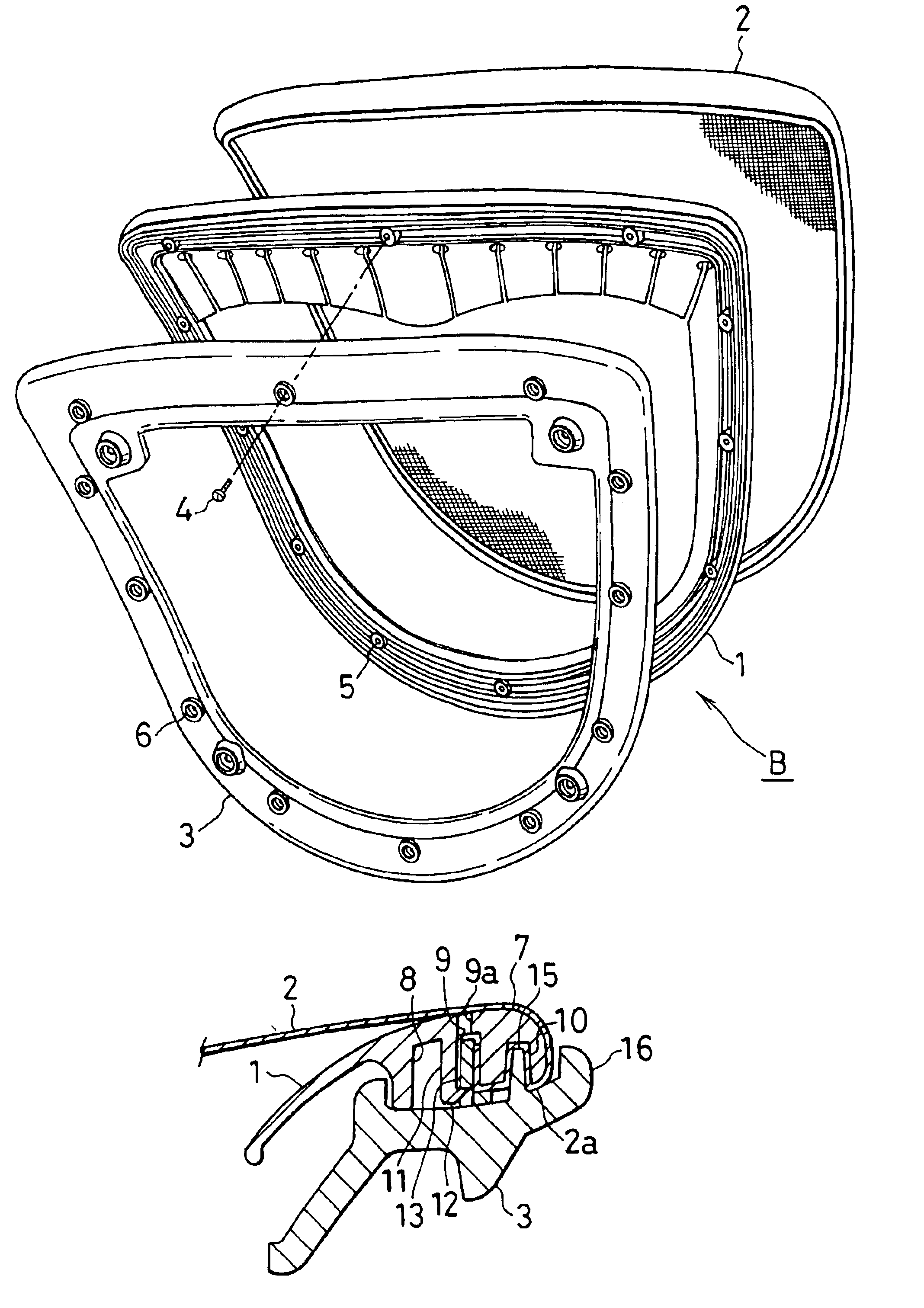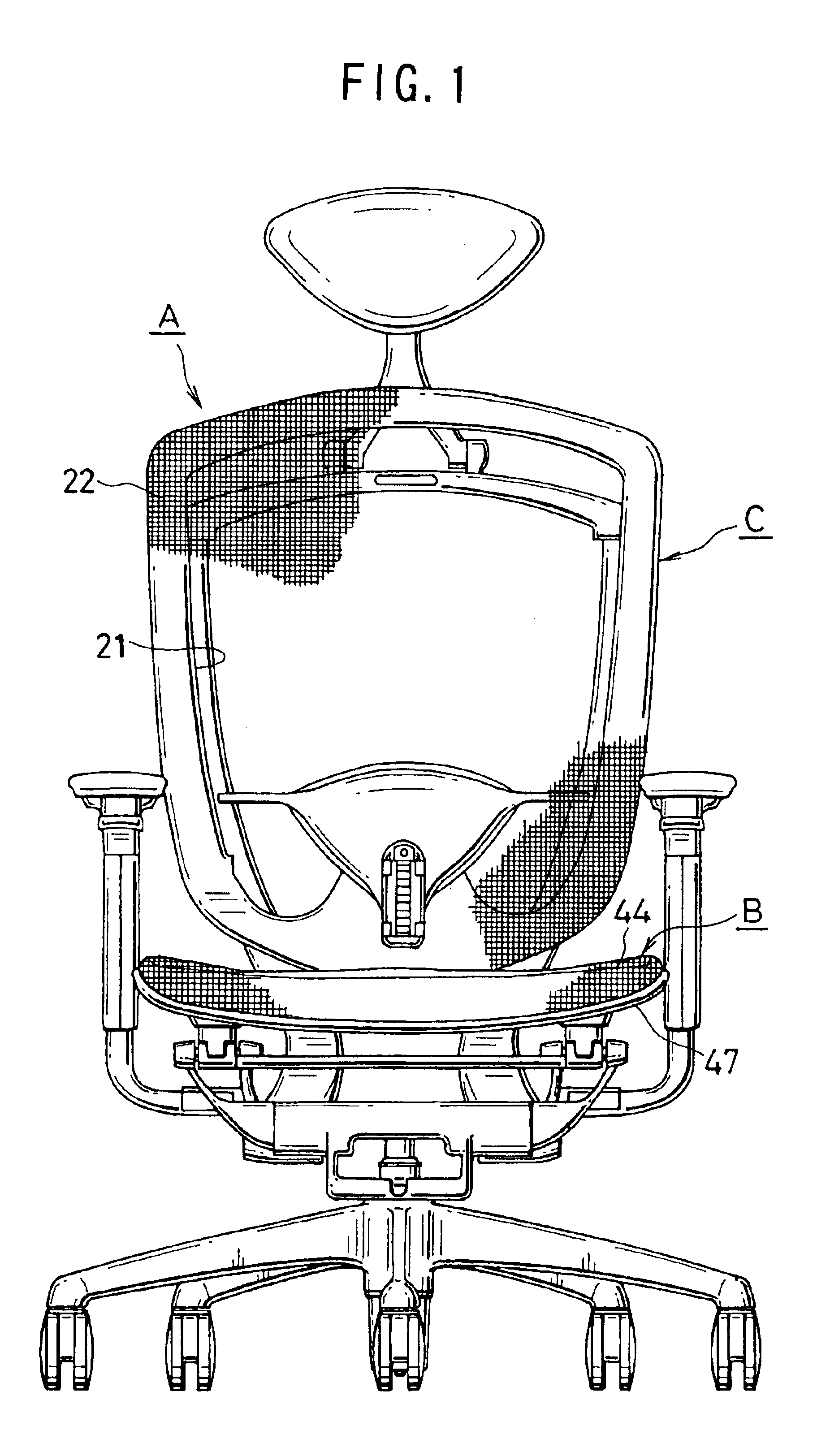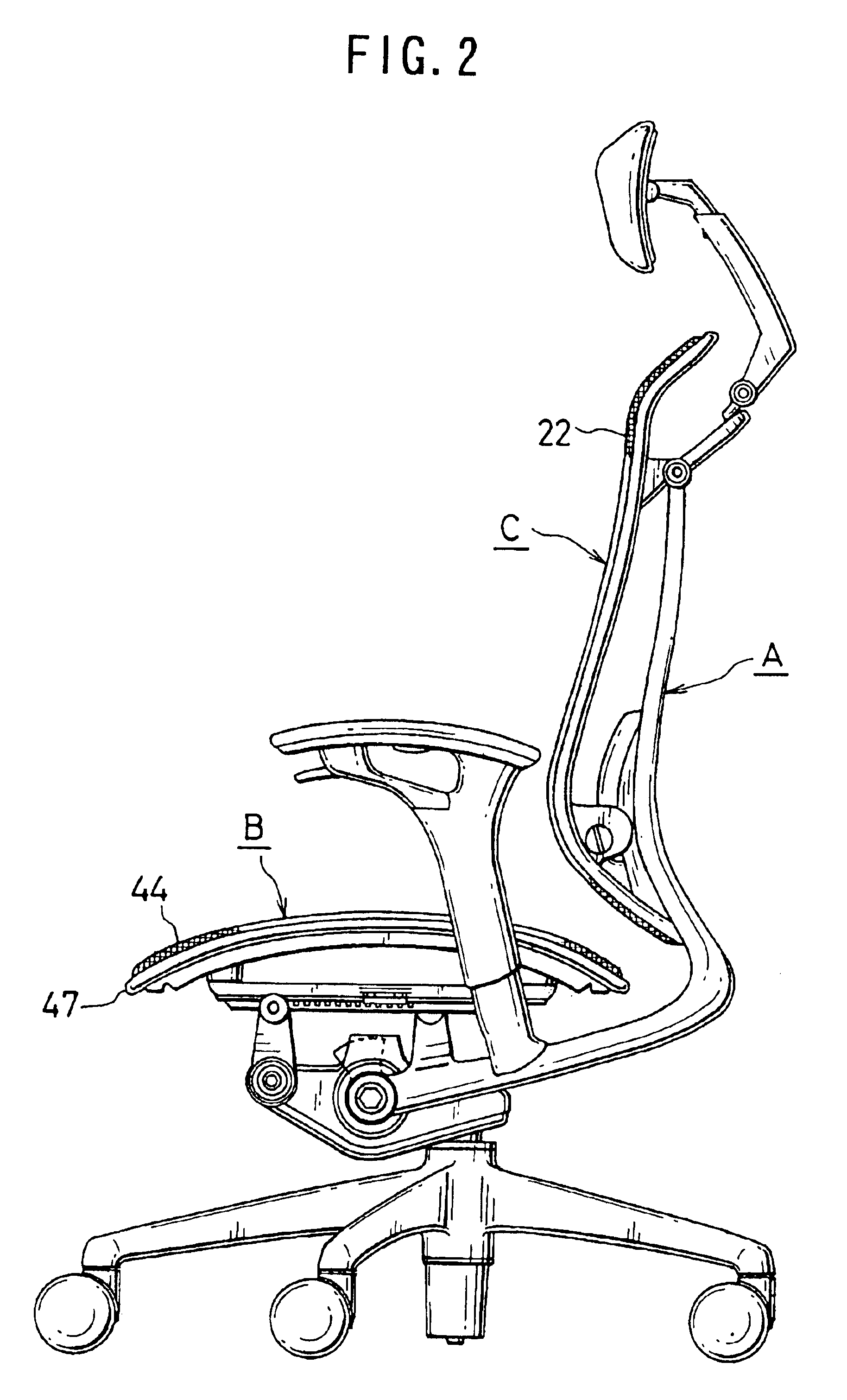Structure for mounting a net member to a frame for a seat or backrest of a chair
a technology for mounting structures and net members, which is applied in the field of structure for mounting net members to seat frames, can solve the problems of difficult to obtain frictional force enough to hold a sitting person, difficult to mount the outer periphery of the net member to the seat frame at non-uniform tensile force, and high labor intensity, and achieves low tensile force and low cost. , the effect of suitable comfort and appearan
- Summary
- Abstract
- Description
- Claims
- Application Information
AI Technical Summary
Benefits of technology
Problems solved by technology
Method used
Image
Examples
first embodiment
[0034]the present invention will be described. The present invention is applied not only to a seat “B” of a chair “A” in FIG. 2 but also to the backrest “C” of the chair “A”.
[0035]As shown in FIGS. 4 and 5, in the seat “B”, the periphery of a net member 2 such as high tension plastic is put on the outer periphery of a closed-loop seat frame 1, and folded. A binding frame 3 similar to the seat frame 1 in shape is put on the lower surface of a folded portion 2a and bound by bolts 4.
[0036]There are formed a plurality of threaded bores 5 and through-bores 6 which are corresponding to each other in position in the lower surface of the seat frame 1 and the binding frame 3 respectively.
[0037]As shown in FIG. 6, the folded portion 2a of the net member 2 is held between the seat frame 1 and the binding frame 3 as below. The outer periphery 7 of the seat frame 1 comprises a hard thickened portion, and the lower surface of the periphery 7 has an annular clearance groove 8, an annular engagemen...
second embodiment
[0051]FIGS. 15 to 18 illustrate the present invention in which a peripheral groove 17 is formed on the upper outer circumferential surface of the seat frame 1. An edge member 18 is engaged on the peripheral groove 17 to apply outward force to a net member 2. The peripheral groove 17 and the edge member 18 may be preferably provided on the whole circumference of the seat frame 1. The edge member 18 may be made of flexible synthetic resin wire such as soft polyurethane having a diameter of 3 to 10 mm.
[0052]FIG. 16 is a perspective view of FIG. 15, and FIG. 17 is a vertical sectional view of a portion having a bolt and the edge member 18.
[0053]Owing to the edge member 18 in the peripheral groove 17, stronger tensile force is applied to the net member 2 uniformly.
third embodiment
[0054]the present invention is shown in FIG. 18, in which a protrusion 19 is formed at the upper end of a peripheral groove 17. An edge member 18 and a net member 2 are firmly held between the protrusion 19 and a protection flange 16 of a binding frame 3 thereby preventing escape of the edge member 18 and elongation of the net member 2.
[0055]A mesh-stretched chair is schematically shown in FIG. 19, in which a mesh 44 for the seat “B” comprises a woven or knitted structure of a series of warps 24 and a series of wefts 29 crossed thereto. The series of warps 24 comprise a number of high tension warps 23; and the series of wefts 29 comprises a series of elastic yarns 26 of a number of elastic yarns 25 and a series of chenille yarns 28 of a number of chenille yarns 27.
[0056]In the example, the series of elastic yarns 26 comprise four elastic yarns 25, and the series of chenille yarns 28 comprise two chenille yarns 27. The warp 23 may be preferably made of polyester multufilament having ...
PUM
 Login to View More
Login to View More Abstract
Description
Claims
Application Information
 Login to View More
Login to View More - R&D
- Intellectual Property
- Life Sciences
- Materials
- Tech Scout
- Unparalleled Data Quality
- Higher Quality Content
- 60% Fewer Hallucinations
Browse by: Latest US Patents, China's latest patents, Technical Efficacy Thesaurus, Application Domain, Technology Topic, Popular Technical Reports.
© 2025 PatSnap. All rights reserved.Legal|Privacy policy|Modern Slavery Act Transparency Statement|Sitemap|About US| Contact US: help@patsnap.com



